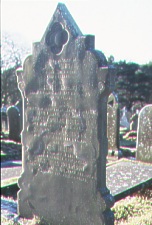
Manx Sun June 1890
During the week death has removed from amongst us one of the oldest and most respected Douglas residents, in the person of Mr Henry Robinson, of Finch-road, who passed peacefully away on. Wednesday morning last. Mr Robinson had reached a green old age, having exceeded the Psalmist’s allotted span of three score and ten by twelve years. Up to the latter end of last year be enjoyed remarkably good health, and his tall, spare figure, so well known in Douglas was the very embodiment of a hale and hearty old man. Last year, however, time; which had dealt so kindly with him, claimed him, and he commenced to sink gradually. Occasionally he would rally, and would he able to resume his favourite walks in the open air, but the hopes that these transient flickers raised in his family were only illusory, and for the last few months he has been virtually confined to the house. He had no particular form of complaint, and his death was simply due to natural decay of the system. Mr Robinson’s father, a Lancashire man, came to the Island at the end of the last century to build the Nunnery Mills. He settled in Douglas, and built many of the fine residences upon the out skirts of the town—notably, Ballabrooie and Thornton. Two of his sons—the late Mr John Robinson and the subject of this memoir—followed in the same business, the former taking up the architectural and the latter the practical branch of the building trade. They both served their time with their father, and Mr Henry Robinson (who had been educated at the Lancastrian school, Athol-street), while doing so worked as a joiner at Ballabrooie. which was in course of erection for Mr McGuffog, the then Collector of Customs, and at Thornton, the present residence of Mr J. J. Karran. Mr Robinson. early showed great aptitude as a builder, and on the completion of his apprenticeship he left the island for London. While in the metropolis the great intelligence and ability he displayed in the employ of one of the most celebrated London firms, led to his promotion to a position of considerable responsibility in connection with work at Hampton Court, Apsley House (the Duke of Wellington’s residence), and the Bank of England. Afterwards he proceeded to New York, where he engaged in the manufacture of pianofortes. On returning to the Isle of Man in 1836 he entered into partnership with Mr John Robinson, his brother, and as builders they soon obtained an Insular reputation second to none. Douglas was then but a small place, and was just becoming known as a seaside resort. The Messrs Robinson were among the first to grasp the possibilities that the grand situation of the town afforded, and when the owners of the Castle Mona Estate decided to lay out, for building purposes, that part of it upon which Clarence-terrace, the Esplanade, Derby-terrace, and Castle-terrace at present stand the partners, in addition to laying out the estate, built some of the finest houses in those terraces, which even yet more than hold their own in Douglas for tasteful architecture. When the Woodbourne estate, too, was opened out the Messrs Robinson put up several houses in the neighbourhood of West View. But it is in connection with some of our public buildings that Mr Robinson gained his chief reputation. Along with his brother he put up the Oddfellows’ Hall in Athol street, a building which is now known as, and used for the purpose of, the Court house. St. Andrew’s Presbyterian Church was also erected by the brothers, as were the Greeba Castle and Greeba Towers, two picturesque residences in the Douglas and Peel Valley; the Swiss Cottage (Glen Helen), Ravenscliffe, Falcon Cliff, the Priory, and Eaglehurst. In fact, Mr Robinson was, while actively engaged in business, identified with the erection of most of the principal buildings in Douglas and the neighbourhood. He was one of the first and, and is the last of that enterprising body of builders, whose number included such men as the late Robert Cain, Thomas Kewley, and Daniel Cowin, who by their enterprise converted Douglas from a fishing village into a town of wide streets and handsome houses. The last work upon which Mr Robinson was actively engaged was the Peveril Hotel, the erection of which building he superintended on behalf of Mr John McGhie, the owner. Since then the remainder of his days has been passed in well-earned rest, but his opinion was often sought for upon knotty questions arising out of building matters. and he was always pleased and ready to place his great experience at the service of the younger generation of builders. Mr Robinson was a staunch Congregationalist, and at the time of his death was the oldest member of the body in Douglas. He was one of the principal supporters of the movement which resulted in the erection of the handsome church in Buck’s-road, now used by the Douglas Independents for public worship. In town matters, though he never was an ardent politician. Mr Robinson took a deep interest, and was a firm believer in a liberal policy so far as the administration of municipal affairs went. By his death a link connecting Douglas of three-quarters of a century ago has been severed. The funeral takes place this morning from 78, Finch-road. and will proceed to Finch Hill Church, where the Rev. D. Inglis will read the burial service. The service at the graveside will also be conducted by the rev. gentleman.
[though unsigned very probably by A.W. Robinson - son of Henry who was foreman of Manx Sun printing works]

Buried in Braddan New, adjacent grave to brother John
|
|
||
|
Any comments, errors or omissions
gratefully received The
Editor |
||